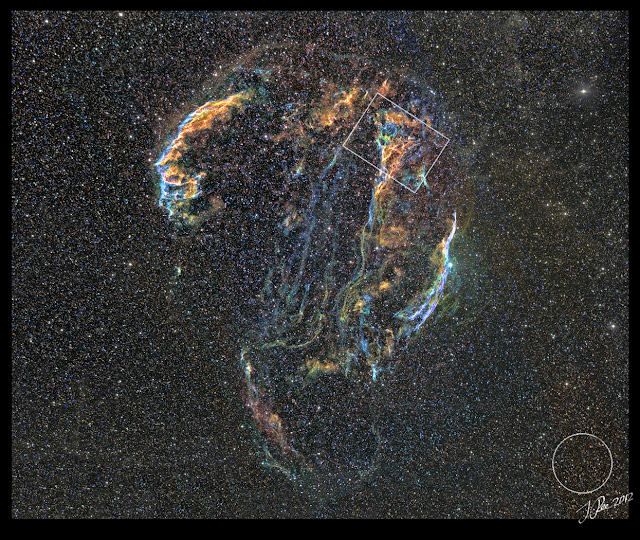COPYRIGHT, PLEASE NOTE
All the material on this website is copyrighted to J-P Metsavainio, if not otherwise stated. Any content on this website may not be reproduced without the author’s permission.
BUY A MUSEUM QUALITY POSTER
BUY A POSTER:https://astroanarchy.zenfolio.com/
Wednesday, July 24, 2013
Art ∩ Science = Wonder
My summer pause is still ongoing, next time we'll have an astronomical darkness at mid September, up here at 65N.
Astronomical imaging is a mixture of art, science and technique. The art part is the most important for me, even though my images are scientifically correct. I made an image to show, how I see my passion.
ART ∩ SCIENCE = WONDERS
Rosette Nebula in natural colors
INFO
My image of the Rosette Nebula is used for this poster. Original image with technical details can be seen in my portfolio: http://astroanarchy.zenfolio.com/p62690868/h6d02179f#h6d02179f
More information and images in my original blog post:
http://astroanarchy.blogspot.fi/2011/02/caldwell-49-rosette-nebula.html
Thursday, June 6, 2013
Pelican Nebula zoom in series and the scale in a sky
I have shot many targets with several focal lengths. Due to that, I will publish some of my material as image sets, with a different field of view and level of details. The fractal nature of our universe stands out nicely in this way and it will make the orientation more easy.
Many times, it's difficult to understand the image scale of astronomical images.
Therefore I have added a "Moon circle" in the images to show the angular scale in the sky. The full Moon has an angular size of ~30 arc minutes, that's equal to ~0,5 degrees.
Be sure to click for a full size image!
A zoom in series to the Pelican Nebula.
Note. a circle, size of the full moon, as a scale.
A largish image, 7.5MB and 1356x5487 pixels

The North America and Pelican nebulae can be seen at upper left corner.
Images used in this zoom in series
Technical details behind the links
- Part of the large, 18-panels, mosaic of the Cygnus, imaged with a Canon 200mm f1.8 lens, QHY9 astronomical camera and the Baader narrowband filters: http://astroanarchy.zenfolio.com/p1072219942/h1a60116f
- North America and the Pelican Nebulae, imaged with a Tokina AT-X 300mm f2.8 lens, QHY9 astronomical camera and the Baader narrowband filters: http://astroanarchy.zenfolio.com/p1072219942/h2c811434#h2c811434
- Part of the large, 18-panels, mosaic of the Cygnus, imaged with a Canon 200mm f1.8 lens, QHY9 astronomical camera and the Baader narrowband filters: http://astroanarchy.zenfolio.com/p1072219942/h3f92be2d#h3f92be2d
- A closeup of the Pelican Nebula, imaged with the Meade LX200 GPS 12" f5 telescope, QHY9 astronomical camera and the Baader narrowband filters: http://astroanarchy.zenfolio.com/p1072219942/h35663238#h35663238
Wednesday, May 22, 2013
Filaments of the Veil nebula, starless view
One of my starless astronomical image experiences, the Pickering's Triangle in Cygnus supernova remnant.
This area of the nebula is filled with colorful filaments, ionized sulfur and hydrogen are seen as green, golden hues, ionized oxygen can be seen as blue.
The complexity of filaments stands out nicely in this starless image.
An original image with the stars
Original blog post about this image, with the technical details, can be seen here:
http://astroanarchy.blogspot.fi/2012/11/pickerings-triangle-project-finalized.html
Orientation in the Veil Nebula SNR
INFO
Exposure and processing details
This area of the nebula is filled with colorful filaments, ionized sulfur and hydrogen are seen as green, golden hues, ionized oxygen can be seen as blue.
The Pickering's Triangle with a suppressed stars
A detail of the Veil Nebula supernova remnant
The complexity of filaments stands out nicely in this starless image.
An original image with the stars
Image is in mapped colors, from the emission of ionized elements, R=Sulfur, G=Hydrogen and B=Oxygen.
http://astroanarchy.blogspot.fi/2012/11/pickerings-triangle-project-finalized.html
Orientation in the Veil Nebula SNR
Area of interest is marked as a white rectangle, the apparent size of the Moon can be seen at lower right corner.
INFO
Pickering's Triangle, Simeis 3-188, is a small part of the Veil Nebula supernova remnant in constellation Cygnus.
Veil Nebula is a cloud of ionized gas and dust, leftovers from an exploded star. The star went off some 5000-8000 years ago at distance of about 1470 light years. This, relatively faint target, is difficult to image due to the large angular diameter, about three degrees, and a dense star field.
Exposure and processing details
Processing work flow:
Image acquisition, MaxiDL v5.07.
Stacked and calibrated in CCDStack2.
Levels, curves and color combine in PS CS3.
Optics, Meade LX200 GPS 12" @ f5
Camera, QHY9
Guiding, SXV-AO, an active optics unit, and Lodestar guide camera 8Hz
Image Scale, ~0,8 arc-seconds/pixel
15 x 1200s exposures for the H-alpha, emission of ionized Hydrogen = 5h
9 x 1200s exposures for the O-III, emission of ionized Oxygen = 3h
4x1200s exposures for the S-II, emission of ionized Sulfur = 1h 20min.
Labels:
Narrowband color images
Sunday, May 19, 2013
Never lose your sense of wonder!
Just a little reminder...
The Bubble Nebula
I shot this image of the Bubble Nebula back in 2009, large images and more info in this blog post:
http://astroanarchy.blogspot.fi/2011/03/bubble-nebula-reprocessed.html
Subscribe to:
Comments (Atom)













